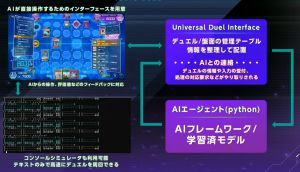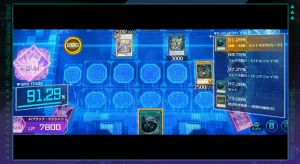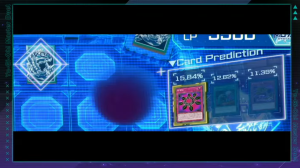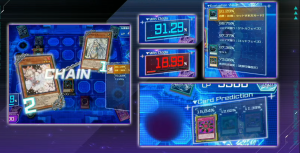For me, I welcome the new AI overlords.
・New structure deck: Blue Eyes Max
A deck whose trump card is the tenacious “Blue Eyes” monster. Many of the “Blue-Eyes” support cards, such as “Ancient Whitestone” and “Blue-Eyes Jet Dragon”, have graveyard-related effects. Always be aware of the condition of the cemetery. If you prepare and summon powerful monsters such as “Blue-Eyes Chaos MAX Dragon”, complete victory is just around the corner!
Recorded cards:
Blue-eyed White Dragon (UR)
Blue Eyes Alternative White Dragon (UR)
Blue Eyes Chaos MAX Dragon (UR)
Available from February 7th (time zones apply)
– New selection pack: Ride into the Future
Recorded cards:
Diabell Star Black Witch (UR)
Snake-eyed Flamberge Dragon (UR)
Cosmic Quasar Dragon (UR)
TG Grave Blaster (UR)
Charlemagne (UR)
Available from February 7th (time zones apply)
– New Selection Pack: Champion Names
Recorded cards:
Lady Labyrinth of the Silver Castle (UR)
Destiny HERO – Destroyer Phoenix Enforcer (UR)
Baronne de Fleurs (UR)
Orcust of the Evening Star Dingirsu (UR)
Access code talker (UR)
Available from February 7th (time zones apply)
————
Regarding AI systems, a short presentation was live-streamed on the second day of the event (starting at around 47 minutes).
Kenichi Kataoka (Master Duel/Duel Links Senior Producer)
Mr. Hattori (programmer)
Q: Could you briefly explain this AI project?
Mr. Hattori: This project is a system using Python for Master Duel. Simply put, it means having knowledge of AI and Yu-Gi-Oh! With OCG, anyone can create a dueling AI that can master duels.
Q: By “anyone”, do you mean someone outside of Konami?
Mr. Hattori: Yes, that’s right. First of all, he would like to take a look at a duel between two AIs created by. [one or more people] Outside of the Master Duel production team.
The on-screen graphic basically explains that a special interface has been created for the AI to interact directly with the game (pictured above).
The text in the center of both images explains that actions, probability ratings, etc. from the AI create a feedback system.
The image below explains that it is also possible to use a console simulator to speed up duels with a text-only interface.
The two squares on the right basically explain that the information from the duel and the board is organized and delivered to the AI, which then responds with its inputs and requests. An AI agent (written in Python) is an AI framework/trained model.
Q: This looks quite different from the normal screens seen in Master Duel, can you give us an overview of what we’re seeing?
Mr. Hattori: Yes. The first thing I would like to point out is that there is a percentage displayed in the bottom left. This percentage is the odds of winning from the point of view of the AI’s movement. This bottom left box shows the total estimated winning odds, while the bottom right shows the top five hands. So we’ll see how the AI chooses his number one move. The winning rate is low at the moment, but there will be moves to significantly increase the winning rate in the near future, so keep an eye on it.
(AI will be able to search and ritual summon Blue-Eyes Chaos MAX Dragon using “Awakening Dragon’s Melody”, increasing the chance of victory to approximately 80%)
Q: From my perspective, this looked like two CPUs dueling each other, but there’s more to it than that.
Mr. Hattori: Well, this is not the CPU, but an external program that runs Master Duel. In other words, machine learning is being used to teach AI. User data is not utilized at all, and the AI learns how to duel from scratch by repeating duels without being taught the rules.
Q: When you say “many times”, how many times?
Mr. Hattori: I had the CPU practice dueling in solo mode over 100,000 times.
Q: The current AI is the result of repeating duels over 100,000 times without teaching the rules, right?
Mr. Hattori: Yes.
“You’ve probably done more duels than humans!” “It’s just training!”
Q: It’s so cool to see so much information on the screen!
Hattori: Yes, we thought it would be interesting for anyone to see what the AI was thinking on the screen.
Ken’ichi: We are game developers, but we are not AI experts. Therefore, I thought it would be interesting to see what kind of AI a company specializing in this field could create, and what kind of duels between AIs would be, so I launched this project. “Who can create the strongest AI?” Of course, it is also possible for AI to duel with human players, so it is interesting to see what kind of duel will take place between “the world’s No. 1 AI” and “the world championship champion.” I’d like to see it too.
Q: Does this mean that people outside of Konami can also participate?
Kenichi: Of course, this is not a system that just asks everyone to create AI. At the moment, [protocols/rules/terms of service] We are currently working on the creation of AI Duel Creators, and are currently working to post recruitment for AI Duel creators on the Master Duel official website by the end of this year.
Mr. Hattori: First of all, we hope that groups and organizations with AI production skills will participate. Preferably a university competition.
“It would be great if each university could teach its own AI and compete with other universities!”
Ken Inch: Well, the AI created by universities is very interesting.
“Well, it has its own personality depending on the person who makes it.”
Kenichi: So far, this story has been aimed primarily at AI enthusiasts, but all duelists will benefit as well.
Mr. Hattori: I introduced it in the previous video, but please take a look here.

Mr. Hattori: By using AI’s win rate estimation function, it is possible to create something similar to the familiar advantage meter in Go and Shogi.
Q: I see. As you can see in this image, it shows that the turn player is in an advantageous position.
Mr. Hattori: That’s right.
“I see, just by looking at it, you can see that the player who has Mysterious Space Typhoon has an easier time winning!”
“For those of us who comment on tournaments, we can just look at the screen and know who the winner is.”
“[…]There may also be cases where someone has a 5% chance of winning, draws a new card, and boom! They can suddenly subvert expectations! ”
Q: Is there anything else?
Hattori: Yes, I’m also looking forward to the ability to predict face down cards. Please take a look at the next slide…
Mr. Hattori: You can see how the AI is trying to predict which cards are face down. [Vaguely explains that the prediction could be off, the A.I. could hold back, move aggressively, etc.]
“The AI thinks like this: A face down card could be the Ring of Destruction.”
“Probably got attacked by RoD too many times.”
“Who has dueled 100,000 times?”
“That’s how the AI develops its quirks depending on the opponent.”
“It’s like the world of VRAINS where you can check someone’s duel data.”

Kenichi: The concept of Master Duel is a duel that both participants and viewers can enjoy. That’s why we’re also trying to improve what we can show. We believe that conveying the benefits of Master Duel to the audience in the simplest possible way is the basis for increasing the number of players. That’s why we will continue to evolve Master Duel for duelists and for those who support duelists. Please look forward to the future of Yu-Gi-Oh! digital games!
Then the live demonstration will begin. Both Kenichi and Hattori said that although the AI has dueled with him more than 100,000 times, it is still considered to be “young” and “undeveloped” as an AI, so there is a possibility that it will make unexpected movements. I’ll mention it right away. Hattori said that if the AI does not attack and the opponent controls a face-down card, the AI will make a decision based on the potential face-down card and determine that it is not a threat (mirror). Emphasis on the Eternal Soul (not the Force). ), proceed with the attack. It also emphasizes that the AI has some understanding of the opponent’s deck in order to make such predictions. Mr. Hattori answered a question about whether it would be possible to teach AI the existence of a specific deck and have it learn how to deal with that deck, for example, if it would be possible to teach AI the currently strong decks such as “Horus”. answered. Hattori replies that it is possible to teach AI that way. The AI uses Ring of Destruction in the end phase, but when Hattori was asked if the specific use of this card was learned by the AI, he said that through thousands of duels, the AI I explained that I appreciated the move to victory. The AI doesn’t know the rules of Yu-Gi-Oh, but it understands that this particular move will lead to a good outcome.
(Unfortunately, due to time constraints, the duel ended prematurely.)


![[Master Duel] Upcoming products and other information about AI projects](https://5gantennas.org/wp-content/uploads/2024/02/diabellestarthumb.png)